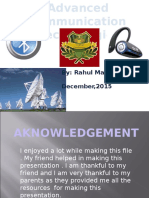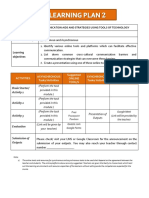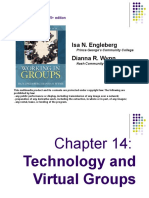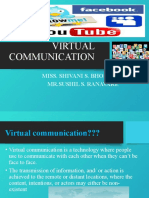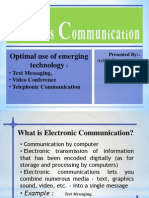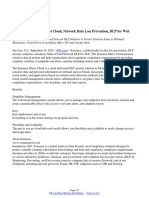0% found this document useful (0 votes)
40 views9 pagesUnit-I VC
The document provides an overview of virtual communication, defining it as the exchange of information through electronic means without physical presence. It discusses its importance, key features, modes, historical evolution, objectives, and relevant theories. Virtual communication is essential for global connectivity, remote work, and modern collaboration, significantly impacting various sectors such as business, education, and healthcare.
Uploaded by
bossnaruto276Copyright
© © All Rights Reserved
We take content rights seriously. If you suspect this is your content, claim it here.
Available Formats
Download as PDF, TXT or read online on Scribd
0% found this document useful (0 votes)
40 views9 pagesUnit-I VC
The document provides an overview of virtual communication, defining it as the exchange of information through electronic means without physical presence. It discusses its importance, key features, modes, historical evolution, objectives, and relevant theories. Virtual communication is essential for global connectivity, remote work, and modern collaboration, significantly impacting various sectors such as business, education, and healthcare.
Uploaded by
bossnaruto276Copyright
© © All Rights Reserved
We take content rights seriously. If you suspect this is your content, claim it here.
Available Formats
Download as PDF, TXT or read online on Scribd
/ 9














